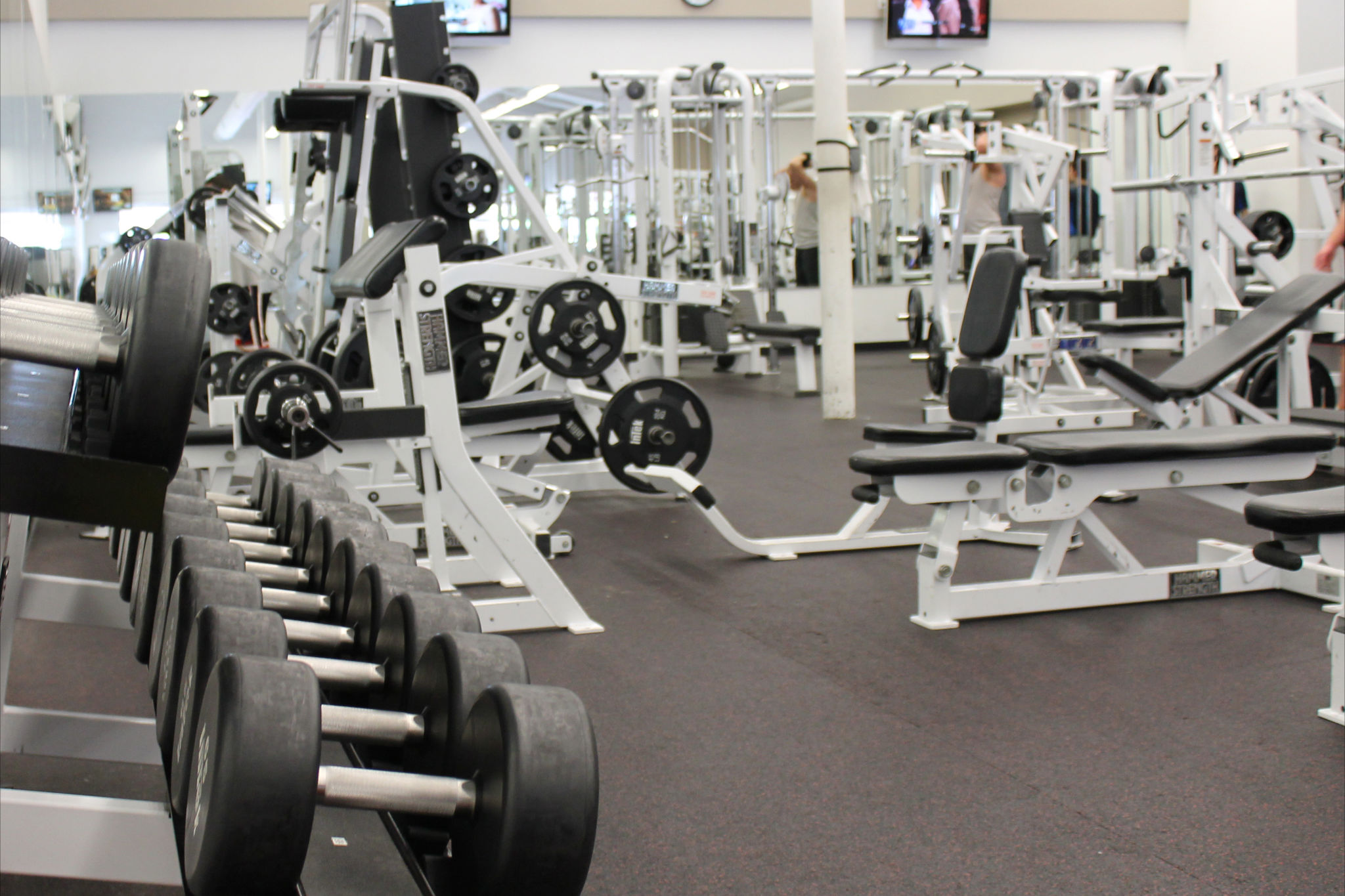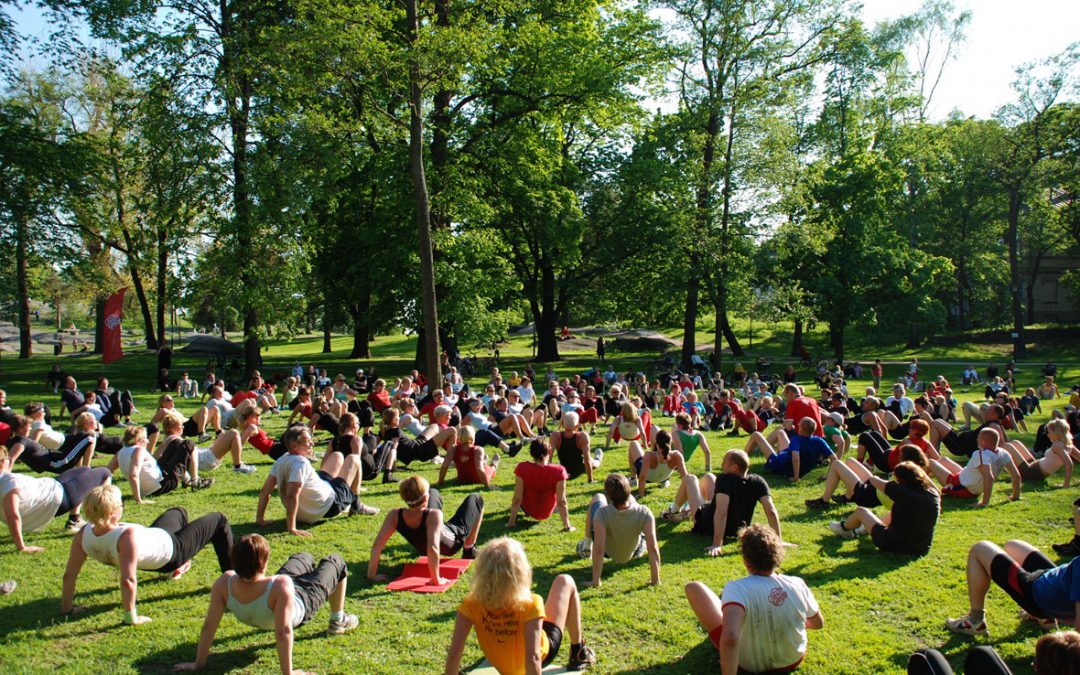Recommending physical activity is all the rage in physiotherapy at the moment, and for good reasons. Yet what we haven’t thought about very much so far, is that recommending physical activity is always already an environmental practice. That is, it always has a variety of small and large implications for the environment. And so in reality, you are always already practicing environmental physiotherapy, whether you wish to engage with environmental questions or not.
It doesn’t really matter from which angle you start thinking about how recommending physical activity is an environmental practice, so let’s start with a situation that will be familiar to many physiotherapists. You are in your treatment room or area and have, in collaboration with your client, decided that some kind of physical activity will help their recovery. You might have opted for them starting out with a few simple exercises at home. This is probably a very laudable approach, insofar as we would currently be able to describe it as relatively low-carbon, that is, there is little transport via car or similar involved, it won’t require extra space to be built, nor much energy (e.g. for lighting, or heating) to be used that wouldn’t have been used in your clients home anyway.
But we also know that home exercise programs are often difficult to adhere to and so, assuming your client prefers to be physically active in a more social environment, you decide to send them to a gym, possibly even one that offers some sort of rehabilitation classes. Or your physiotherapy clinic already has these facilities. At this point you are likely looking at considerably greater environmental costs already. More energy needs to be used to maintain the space, more energy and transport needs to be used to get to and from there, natural resources need to be used (incl. mined) to produce gym equipment, other clothes than at home might be worn, which come with additional costs in production and consumption, etc etc. You are probably getting the picture already.

Alright, so you decide to opt against the gym approach and instead recommend physical activity outdoors. This could be organised or unorganised, with a small or large group, close to your clients home, or a little further away, or else. You can imagine how each of these variables brings new calculations regarding environmental costs and benefits with it. You might be using less energy on location and for its maintenance, and ideally, you have brought transportation costs down because the activity is readily available close to your clients home.
Or you have decided to make a change in transportation modes the physical activity in itself. This is widely hailed one of the key changes to be made going forward as we transition to a more environmentally sustainable future. That is, more people walking or cycling and less people driving cars means less greenhouse gas emission resulting from the usage of cars, etc. Of course your city has to allow for this in the sense that the distances have to be achievable, there has to be enough walking, cycling (now also e-scootering) space, and some well-connected, low-cost, low-emission public transport would be helpful too. So now you have to have a basic understanding of urban planning, and possibly get involved in it, as a physiotherapist, when the next decisions about e.g. bike-lanes are being made in your community to ensure that your clients can actually take part in the physical activity that is self-transport and get to where they want and need to get using physically active means of transportation.
We are also more and more clear about the fact that getting people to spend more time outdoors (often referred to as green-space exposure or similar, though the term outdoor probably does blue- and maybe other colour spaces a little more justice) is also crucial to health, as well as recovery, so you might well be on the right track in terms of ‘greening’ your practice here. This might also be an additional motivation to moving people out of the artificial environments that gyms present and in which people, maybe paradoxically, go indoors and away from their natural environments to engage in health-supporting activities.
But if you choose this path, you also have to think about another aspect. In the struggle with the relatively low incomes that are often associated with being a physiotherapist, many physiotherapists have chosen to support their work by either integrating a gym-space into their clinical environment, or having close working relationships with neighbouring gyms. In this case, recommending people outdoors might be playing directly against your own, or your partners financial interests and livelihood, so a new problem arises that requires solving. In this case, what you might need to do first or at the same time, is to create alternatives at this end, e.g. by gradually phasing out your gym equipment (finding environmentally friendly ways to do so of course), generating new income avenues via outdoor classes, etc.
If you have transitioned to outdoors classes, possibly even an outdoor clinic, and have maybe even prompted other clinics in your area to follow suit, you will, however, have to start thinking about what kind of activities you will be offering. What additional equipment, and therefore resources do participants require? Do additional, ‘untouched’ natural spaces have to be cleared or altered for there to be sufficient space for everyone to engage in their chosen physical activity? And what effect does your 20-participant strong group have on the plants and animals that live in these spaces? Or could the activity consist of restoring and regenerating natural eco-systems? The list goes on.
If the issue has not been complex enough already, you can now see how you are actually always already juggling environmental issues, with economical issues, as well as psychological and social issues. And just to be clear, this is already happening anyway. As you are sitting in your treatment space, mulling over and discussing physical activity recommendations, you are already sitting in a space that probably still requires the use of fossil fuel energy to keep your lights going; you might or might not have windows or access to daylight in your treatment space, which, might have effects on your own wellbeing and the health of your clients, and you might be playing relaxing nature sounds over your fossil-fuel-run-radio because it helps your client relax, etc etc.

The end point of the thought-experiment we have engaged in here is as arbitrary as its starting point, as we could go on like this for quite a while longer exploring all the myriad connections there are between physiotherapy and the environment. So to not make things more complex than they already are it might be best to stop here for now. Not wanting to overcommit at this point, but ‘You are already practicing environmental physiotherapy: …’ could easily become a series of blogposts where we look at similar relationships across different areas of physiotherapy practice in the future. The bigger points of such a series however, are, in many ways the same across any example we could pick out.
The first of these points is that everything we do as physiotherapists has environmental ramifications, one way or another. There is, metaphorically speaking, really no treatment room, research laboratory, or specialty area that you can hide in as far as this is concerned, not even if you are a future physiotherapist working on a spaceship or exoplanet. The key change we might have to make as a profession at this point is to start thinking about it more deliberately and becoming aware of the bigger, environmental picture that we are operating in.
Secondly, there are some very important and readily available solutions at hand to support the transition into a more environmentally sustainable future. Taking (outdoor) physical activity as an example, physiotherapists are definitely very experienced in these already, so it would be great if we could continue playing a key role in their further promotion going forward. Recommending ‘greener’ physical activity would then actually be a form of clinical environmental activism. And how great is that? We could really contribute to a more environmentally friendly future by doing what we do well, only even better. Implementing and supporting ready solutions like this also really can’t happen soon enough, so there is every reason to go right ahead.
But finally, it is also good to remember that whatever solutions we come up with, or contribute to, it’s important that we continue critical reflection and keep refining them as we go. As already mentioned recently, there will and must be more ways than one to tackle the current environmental-and-health emergencies, so much remains to be thought about and done. Whichever way you look at it though, these are definitely exciting times and they could do with a bit of support from your trusted and friendly neighbourhood physiotherapist, so we hope you will all get involved.
Filip Maric (PhD)
Filip Maric is a physiotherapist and researcher interested in practical philosophy, ethics, environmental physiotherapy, planetary health and sea kayaking.

